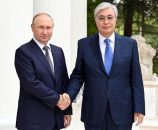Mohammad Jamil
RAW through its front organization titled “A Publication of Bureau of political Research and Analysis” continues vilification campaign against Pakistan/Armed Forces/ISI on one count or the other. They negatively portray Pakistan’s image in world’s eyes. Although all and sundry know that Pakistan had imposed restrictions on US diplomats in response to similar act by the US, yet Indian RAW is projecting that both countries are engaged in a diplomatic row and the US has imposed restriction on Movement of Pakistan Diplomats. On the other hand, it is boasting about development of Light Combat Aircraft Tejas, and claims to have successfully fired an air-to-air BVR Missile Test-Fired from Tejas ‘Beyond Visual Range Missile’ (BVR), which is reflective of its hegemonic designs and war-mongering attitude. Last month, it also propagated that ISI-sponsored terrorism resulted in the loss of lives of approximately 14000 Indian citizens during the last 28 years.
During Cold War, India was in the Soviet camp, yet the US had the desire to have close relations with India in view of its size. After the demise of the Soviet Union, India tried to improve its relations with the US; and it was able to convince the US that India could play a role in containing China. But it cannot digest Pakistan’s enhanced bilateral relations with Russia, and highlighted that two top Pakistani military and intelligence functionaries General Qamer Javed Bajwa (COAS) and Lt. General (R) Nasir Khan Janjua (NSA) visited Moscow. In fact, Pak-China-Russia triangle does not suit India; therefore it is opposing it. The Russian offer to expand defence and security ties with Pakistan came during Chief of Army Staff (COAS) General Qamar Javed Bajwa’s visit to Moscow stating that Pakistan was a ‘geo-strategically important’ country and they were keen on expanding existing military-to-military cooperation.
A statement issued by the military’s public relations wing stated that a notable outcome of the meeting was the acknowledgement by the top Russian military commander of Pakistan’s achievement in the fight against terrorism and its contribution to regional peace and stability. This was in stark contrast to the US position which, since Donald Trump came to the White House, repeatedly accused Pakistan of not doing enough. Earlier in February, the then foreign minister Khawaja Asif visited Moscow to garner Russia’s support after Trump pressurized Pakistan to do more on the front of terrorism. The flurry of visits suggested a new push by Pakistan to diversify its foreign policy options, after the US expanded its cooperation and strategic ties with India. Russia was one of the first countries, which publically expressed its solidarity with Pakistan after U.S. president Donald Trump unveiled a new strategy for Afghanistan as well as for South Asia.
President Trump accused Pakistan of supporting and harbouring the Afghan Taliban and the Haqqani network, and he threatened Pakistan to change that approach or face consequences. Russia along with China, however, came to Pakistan’s aid by suggesting that shifting the entire blame on Pakistan would destabilise the region and would have negative impact on Afghan security. Pakistan has been pushing for a regional consensus on Afghanistan. Russia, China and Iran have endorsed Pakistan’s stance that the use of force will not resolve the lingering conflict in Afghanistan. All the regional players believe that the only way out to achieve elusive peace in the war-ravaged country can come through Afghan-led and Afghan-owned peace process. Pakistan has conducted operations in FATA and elsewhere against militants of all hues and shades, but the US and India have been propagating that Pakistan is not taking action against Haqqani network.
Anyhow the US and Indian interests converge, for one the US views India as a vast market, and secondly that it considers India as potential counterweight to China’s assertiveness in Asia. Pakistan and a few other countries had taken exception to extension of specific exemption to India by the US stating that it would be harmful to the norms of Non-proliferation Treaty and other regimes. India’s offensive nuclear capabilities came of age with sea-trials for its first ballistic missile submarine. The INS Arihant was introduced into service in 2015. New Delhi plans to field between four to six similar vessels by the end of 2025 to boost its second strike capability. A number of sources have revealed that India is embarking on a covert uranium enrichment project aimed at producing thermonuclear weapons. Yet the US and the West turn a blind to India’s hegemonic designs with a view to benefit from its size of the market.


